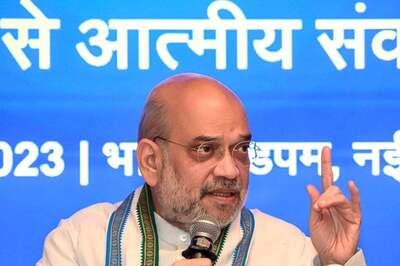
views
The Indian residential real estate market is typically an interplay of two fundamental factors. Market sentiment and the financial impact on buyers’ pockets have a tangible impact on home-buying decisions. Auspicious purchase periods and festive quarters have always underscored the housing sector, even in periods of comparatively slower activity such as COVID-19 pandemic and NBFC sector lending crisis.
Colliers India, in its latest assessment of the Indian real estate sector said that the fourth quarter of October-December, especially festive offerings by developers and banks & financial institutions, are quite synonymous. While developers cash in on the festive season by offering discounts, flexible payment options and reducing floor rise charges, financial institutions entice homebuyers with processing charge waivers and one-time interest rate reductions by a few basis points.
It added that ultimately, the festive season provides the one last thrust to residential real estate activity in India. Nonetheless, home buying remains an emotive concept and the perks of home ownership can no more be over emphasised especially post pandemic.
Badal Yagnik, CEO, Colliers India, said, “Typically, Q4, marked by higher inclination of homebuyers to wrap-up property purchases in festive period and instantaneous liquidity benefit aided by developers offering attractive discounts, has historically provided the final push to residential activity. Close to 40% of the annual residential units sold, achieve closure in the last quarter of the year. Industry consensus is indicative of 2023 housing sales already reaching close to 2022 levels and given the ongoing festive season, 2023 is likely to witness 20-30% higher sales as compared to 2022.”
Buying sentiment relatively undeterred by repo-rate changes
While home loan EMIs do have a role in swaying the home-buying behaviour at the end-user level, the impact is less pronounced on aspirational buyers.
At the industry level, a low correlation between home loan disbursements and repo rate changes, establishes the fact that residential segment activity in India is more governed by the sense of identification and belonging that comes with home ownership, rather than fleeting financial gains brought in repo rate movements.
Buyers with serious purchase intent are likely to stretch their budgets in purchasing homes that align with their desired identity and lifestyle.
Further, it is pertinent to note that homebuying is a long-term financial commitment entailing present income levels, expected growth in income levels interspersed with prevailing interest rates and other benefits at buyers’ disposal.
On an average, a homebuyer goes through at least 3 business cycles during the entire tenure of the home loan and the benefits arising out of interest rate movements get rationalised over time.
“Consumers are well aware that repo rates and thus EMI variations even out over the long tenure of a home-loan. Interest rate trends are cyclical in nature, making end-users less sensitive to fluctuations in interest payments over a 10–20-year period. Homebuyers are more likely to alter the location, stage of construction, ticket size, unit size, preference of developer and bouquet of amenities in the housing society, rather than hasten or delay the purchase decision itself.”, said Vimal Nadar, senior director & head of research, Colliers India.
Immediate & deeper liquidity benefits enthuse homebuyers
Sentiment buoyancy, in fact played a pivotal role in the residential segment staying afloat during the peak years of COVID-19 pandemic in 2020 and 2021. In order to negate the likely adverse impact of the pandemic on housing purchases, various state governments stepped in with reduction of stamp duty and registration charges by up to 2%.
In fact, homebuyers, nudged by the significant one-time monetary outflow reduction, purchased homes even in otherwise turbulent times marked by financial and economic volatility. Moreover, fence-sitters and investors, saw this as an opportune moment to invest in residential real estate be it for self-use, or for pure-play investment purpose.
Even the second homes market witnessed significant traction in the COVID altered world, reaping in multiple advantageous factors such as increased focus on health & wellness, heightened demand for spacious homes and substantial reduction in transactional charges.
Circle rates and property guidance values, akin to the registration charges, determine the timing of property purchases to a large extent. A typical Indian homebuyer is likely to factor in such regulatory changes, more prevalent at the end of calendar or fiscal years and advance or abstain from outright purchases accordingly.
The analysis added that the ongoing festive season is all set to provide a further fillip to residential real estate that has been on an upswing all year. New launches, bumper discounts, tie-ups between developers and home furnishing firms, innovative payment schemes and targeted marketing campaigns, all are the current flavours of the season.
The joyous atmosphere is destined to bring an emphatic conclusion to residential real estate in 2023 and lay the foundation for a stronger 2024 as well.




















Comments
0 comment